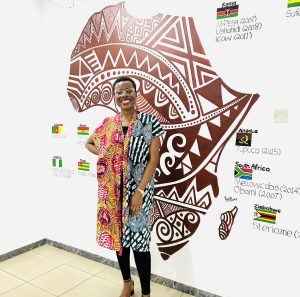
A few weeks ago, an organization engaged me to do an audit of their brand and develop a comprehensive brand and communications strategy for them. The CEO recognized that they hadn’t been intentional about the way the organization communicates and he wanted to ensure they do it right.
Frankly, this was music to my ears. My work is 10 times easier when the client understands the importance of the service I offer. We booked the date for the strategy session and I eagerly got to work preparing the materials for the session.
The first thing I needed to understand was the business of the organization. Too many times, we rush off to create a communications strategy without understanding the core of the business that we seek to communicate. Without understanding what the business does and how they do what they do, you’d soon discover a disconnect when implementing your strategy.
In trying to understand the business, I realized I just didn’t have enough information to answer the question – what does this business do? How do they operate? It didn’t help that the organization had little or no digital footprint. I knew what they wanted to do but it was important to also know their history and the business environment they are operating in.
I noted this down as a key discussion point during our brand and communications strategy session.

The next thing I needed to understand was the industry trends and the larger ecosystem. You may be wondering why this is important. Trends in the industry and ecosystem help you to create a roadmap for the future. It will give you insights on how you need to communicate to the target audience.
For example, I discovered that for this organization to stand out, it needed to strongly own its position as a pioneer. It also needed a proposition that the target audience could easily understand and resonate with. This is because the ecosystem is currently saturated and it changes quickly. Since the target audience have a variety of alternative options, the potential to switch or get bored is easier. Communications therefore needs to sustain their interest across the different touchpoints of the customer journey.
This then took me to crafting brand territory options to give life to what the organization was trying to achieve. This was the tricky part for me. I had to craft a statement that captured the essence of the brand and communicated clearly to the target audience without being verbose. I doff my heart to the team that created the “Go beyond your limits” proposition for Nike. It’s simple, clear and true to the DNA of Nike’s brand.
When I thought I had some really good options to present, I created an outline for the communications strategy. I started with the communication objective, mapping the audience, and the strategic approach. From there, I outlined the tactics for execution and the key metrics and KPIs that need to be measured.

Armed with 40 slides, I was ready to have a deep-dive with the team to:
- Properly define the corporate brand which I discovered was lifeless.
- Define the brand’s territory and positioning
- Agree on the core target audience to focus on.
- Ensure alignment of communications with other key functions in the organization.
When you think about strategic communications, the business itself is at the heart of it. Unravelling and breaking down the essence of that business forms the foundation on which an effective communications strategy can be built. This also allows for proper evaluation and tracking of metrics that have an impact on business objectives. It also gives room to explore possible areas where synergies with other teams within the organization can be created. The truth is communications cannot work in a silo. You can execute a mind-blowing communications strategy but if the product team don’t play their part in on-boarding users efficiently, all the hard work goes down the drain.
So, it’s always important to get the foundation right whenever you want to create a communications strategy.
Wondering how the strategy session with the organization went? Watch out for my next post.




5 Responses
I totally agree with you, that, most times we rush off to develop a communication strategy but when it gets to implementation we get stuck.
Currently, am stuck in developing a communication strategy for my company, because there is a disconnect from the realities of what the ideal customer journey should look like and what is currently been done.
Figuring out the disconnect is a huge task and trends in the industry is not helping out because virtually all the top players in the industry have little or no digital presence.
it is quite challenging!
I think what can help in this situation is to get actual consumer insights, especially since you have identified what caused the disconnect. I’d suggest having focus group sessions/ interviews and carrying out quantitative surveys that can help you navigate the disconnect.
In a situation where industry top players do not have digital presence, what I’d do is to connect with people who have an understanding of the inner workings of the industry and have conversations with them. Sometimes, the information you are looking for can be obtained over coffee or lunch with the right person. Finally, broaden your tent. What are the global trends for that industry? What are the global players doing that’s working? How can you incorporate that into the strategy you want to create.
I hope this helps.